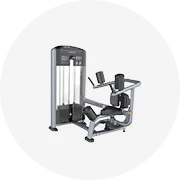





Nhà Máy Bán Buôn Lửa Gạch Giá Magnesit Gạch Chịu Lửa Magnesia Gạch Cho Công Nghiệp Lò
0,10 US$ - 0,50 US$
Đơn hàng tối thiểu: 500 Cái







Mới không thấm nước và chống cháy xây dựng ngoài trời trang trí gạch sợi xi măng Hội Đồng Quản Trị
5,50 US$ - 6,00 US$
Đơn hàng tối thiểu: 100 Cái
Vận chuyển mỗi chiếc: 7,39 US$







Giá tốt nhất nóng bán nhà máy trực tiếp cung cấp lửa đất sét gạch Neo gạch cho vật liệu chịu lửa gạch lót
7,50 US$ - 10,50 US$
Đơn hàng tối thiểu: 1000 Cái
Vận chuyển mỗi chiếc: 65,80 US$







Alumtimes phong cách Mỹ ngoài trời trong nhà xây dựng trang trí đục lỗ khắc nhôm cột ván khuôn
19,99 US$ - 39,99 US$
Đơn hàng tối thiểu: 50 Mét vuông







Nhân tạo linh hoạt vật liệu xây dựng đá tường ốp đá nhìn bên ngoài bảng điều khiển
5,50 US$ - 10,00 US$
Đơn hàng tối thiểu: 50 Mét vuông







Dịch Vụ Khuôn Bê Tông Xi Măng Gạch Xi Măng Cột La Mã Trong Khuôn Nồi Bê Tông Đường Cao Tốc
6,00 US$ - 60,00 US$
Đơn hàng tối thiểu: 1 Cái






KM2-45 nhỏ trực tiếp đẩy bê tông khối Máy làm gạch vuông rỗng Máy làm gạch cho cột kết cấu thứ cấp
395,00 US$ - 425,00 US$
Đơn hàng tối thiểu: 1 Cái







Hàng Rào Bê Tông Dự Ứng Lực Purline/Lintel/Máy Làm Cột
5.500,00 US$ - 6.800,00 US$
Đơn hàng tối thiểu: 1 Bộ






Cột Nhà Thờ Tượng Thiên Thần Bằng Đá Cẩm Thạch Màu Be Ai Cập Cột Đá Granite Giá Rẻ Được Đánh Bóng Tốt Cho Cột Gạch
3.690,00 US$ - 3.900,00 US$
Đơn hàng tối thiểu: 2 Bộ
Vận chuyển mỗi chiếc: 13,60 US$






Bê Tông Đúc Sẵn H Cột Máy Hàng Rào Bài Máy Cho Hàng Rào Tường Và Hàng Rào Cột
6.500,00 US$ - 7.000,00 US$
Đơn hàng tối thiểu: 1 Bộ






Grg thành phần hiện đại nền tường hình cột trong nhà và ngoài trời trang trí
40,00 US$ - 50,00 US$
Đơn hàng tối thiểu: 10 Cái
Vận chuyển mỗi chiếc: 5,12 US$






Bán Hot HBY4-10 Siêu Thủy Lực Hoàn Toàn Tự Động Clay Making Machine Với Bốn Hướng Dẫn Cột
9.500,00 US$
Đơn hàng tối thiểu: 1 Bộ






H1800 khối bê tông Máy làm với 70 rắn 40cr Đồng Bộ hướng dẫn cột
47.500,00 US$ - 49.500,00 US$
Đơn hàng tối thiểu: 1 Bộ
Vận chuyển mỗi chiếc: 26.500,00 US$






Dây chuyền sản xuất vách thạch cao hàng rào bê tông đúc sẵn H cột tạo thành máy đúc sẵn hàng rào tường làm máy hàng rào tường
8.000,00 US$
Đơn hàng tối thiểu: 1 Bộ
Vận chuyển mỗi chiếc: 151,04 US$






Ngoài trời trong nhà Đá Nhân Tạo Polyurethane không thấm nước PU Slate văn hóa đá ốp 3D trang trí cho trụ cột cột
8,90 US$ - 10,90 US$
Đơn hàng tối thiểu: 100 Cái






Bán Buôn Chi Phí Thấp Nhân Tạo Văn Hóa Đá Lớp Phủ Vật Liệu Trang Trí Cho Biệt Thự Hiên Cột Nghệ Thuật Đá Nhân Tạo
7,00 US$ - 8,00 US$
Đơn hàng tối thiểu: 100 Cái
Vận chuyển mỗi chiếc: 5,59 US$






Gốm raschig Vòng Đóng gói ngẫu nhiên raschig nhẫn cho Cột chưng cất
1,00 US$ - 1,20 US$
Đơn hàng tối thiểu: 2000 Kilogram












Tấm Đá Xếp Chồng Màu Trắng Tấm Ốp Gạch Giả Tường Bên Ngoài Tấm Ốp Đá Nhân Tạo Veneer
9,45 US$ - 9,89 US$
Đơn hàng tối thiểu: 200 Mét vuông





Máy Nhỏ Lợi Nhuận Lớn Tự Động Đất Sét Đỏ Cột Máy Cắt
2.600,00 US$ - 25.000,00 US$
Đơn hàng tối thiểu: 1 Bộ







PU Faux Đá Trụ Cột Bảng Điều Chỉnh Nhân Tạo Đá Cột Kết Thúc Tốt Đẹp
30,00 US$
Đơn hàng tối thiểu: 300 Mét vuông






Đúc Sẵn Hàng Rào Bê Tông Trụ Cột Khuôn Giả Gạch Tấm Tường Bên Ngoài Khuôn
79,00 US$ - 119,00 US$
Đơn hàng tối thiểu: 10 Cái

Bên Ngoài Đá Tường Gạch/Nội Thất Tường Đá Ốp/Gạch Cho Ngôi Nhà
20,00 US$ - 99,00 US$
Đơn hàng tối thiểu: 100 Mét vuông






Trung Quốc Baluster Cột Trụ Cột Nhựa Lồng Vào Nhau Gạch Khuôn Ice Cooler Box Tiêm Sử Dụng Xô Khuôn Mẫu
Sẵn sàng vận chuyển
3.300,00 US$ - 5.500,00 US$
Đơn hàng tối thiểu: 1 Bộ
Vận chuyển mỗi chiếc: 379,11 US$






Tùy chỉnh bê tông Lát Bê rỗng lồng vào nhau CLC kim loại carbon interlocks máy gạch khuôn
200,00 US$ - 1.000,00 US$
Đơn hàng tối thiểu: 1 Hộp






4.8KW Máy Làm Gạch Vật Liệu Thép Không Gỉ Mạnh Mẽ Chống Sốc Hấp Tro Bay Gạch Gạch Xi Măng Sản Xuất Thiết Bị
2.150,00 US$ - 2.165,00 US$
Đơn hàng tối thiểu: 1 Bộ






Ván Khuôn Phụ Kiện Bê Tông Vật Liệu Xây Dựng Mạ Kẽm X Flat Tie Bars/Gạch Ties/Wall Tie
0,20 US$ - 0,30 US$
Đơn hàng tối thiểu: 100000 Cái












Corinthian vốn đá trụ cột đầu thiết kế đá cẩm thạch cổng trụ cột Thiết kế cột trụ cột
399,00 US$ - 9.999,00 US$
Đơn hàng tối thiểu: 2 Cái






Cung Cấp Trực Tiếp Từ Nhà Máy Khối Vuông Thủ Công Nhỏ Máy Cắt Gạch Có Lỗ Khoan Trọng Lượng Nhẹ Gạch Xốp
40,00 US$ - 85,00 US$
Đơn hàng tối thiểu: 10 Cái
Vận chuyển mỗi chiếc: 30,08 US$






2024 thiết kế mới gạch tường gạch Veneer đá tự nhiên cột trụ cột
130,00 US$ - 150,00 US$
Đơn hàng tối thiểu: 10 Bộ
Vận chuyển mỗi chiếc: 299,00 US$






Renfa khối bê tông rỗng lồng vào nhau gạch khuôn Interlock xi măng gạch tấm rỗng Cột nhựa khối khuôn mẫu để bán
3,30 US$ - 4,70 US$
Đơn hàng tối thiểu: 300 Cái
Vận chuyển mỗi chiếc: 15,05 US$






Bê tông cột khuôn mẫu tetrapod hình thức khối bê tông khuôn mẫu bê tông đê chắn sóng khuôn
420,00 US$ - 498,00 US$
Đơn hàng tối thiểu: 2 Bộ






Ván Khuôn Gạch Ván Khuôn Cột Điều Chỉnh Được Nhà Máy Bán Chạy Hệ Thống Ván Khuôn Tường Bằng Nhựa
Sẵn sàng vận chuyển
17,00 US$ - 19,00 US$
Đơn hàng tối thiểu: 400 Cái
Vận chuyển mỗi chiếc: 20,47 US$






Bọt gốm thủ công xây dựng trang trí dòng cửa sổ và cửa vỏ 3D dập nổi cột hoa corbels eave dòng
3,95 US$ - 4,30 US$
Đơn hàng tối thiểu: 100 Cái
Vận chuyển mỗi chiếc: 1,00 US$






Gạch Trang Trí Sàn Bê Tông Thiết Kế Mới Gạch Nhựa Lan Can Ban Công Cột Roman Khuôn Lọ Hoa Nhựa Tùy Chỉnh
15,00 US$ - 20,00 US$
Đơn hàng tối thiểu: 1 Cái
Vận chuyển mỗi chiếc: 109,31 US$






Gạch Trang Trí Sàn Bê Tông Tùy Chỉnh Mẫu Nhựa Lan Can Ban Công Lan Can Khuôn Nhựa Cột La Mã
155,00 US$ - 175,00 US$
Đơn hàng tối thiểu: 1 Bộ
Các danh mục hàng đầu
Giới thiệu về cột gạch
Alibaba.com cung cấp các sản phẩm 1035 cột gạch. Có rất nhiều cột gạch lựa chọn dành cho bạn, chẳng hạn như nhựa, thép, và abs. Bạn cũng có thể chọn từ hot, lạnh, và á hậu nóng cột gạch. Cũng như từ trắng, vàng, và đen cột gạch.Và bất kể cột gạch là công nghiệp, nội thất.

























